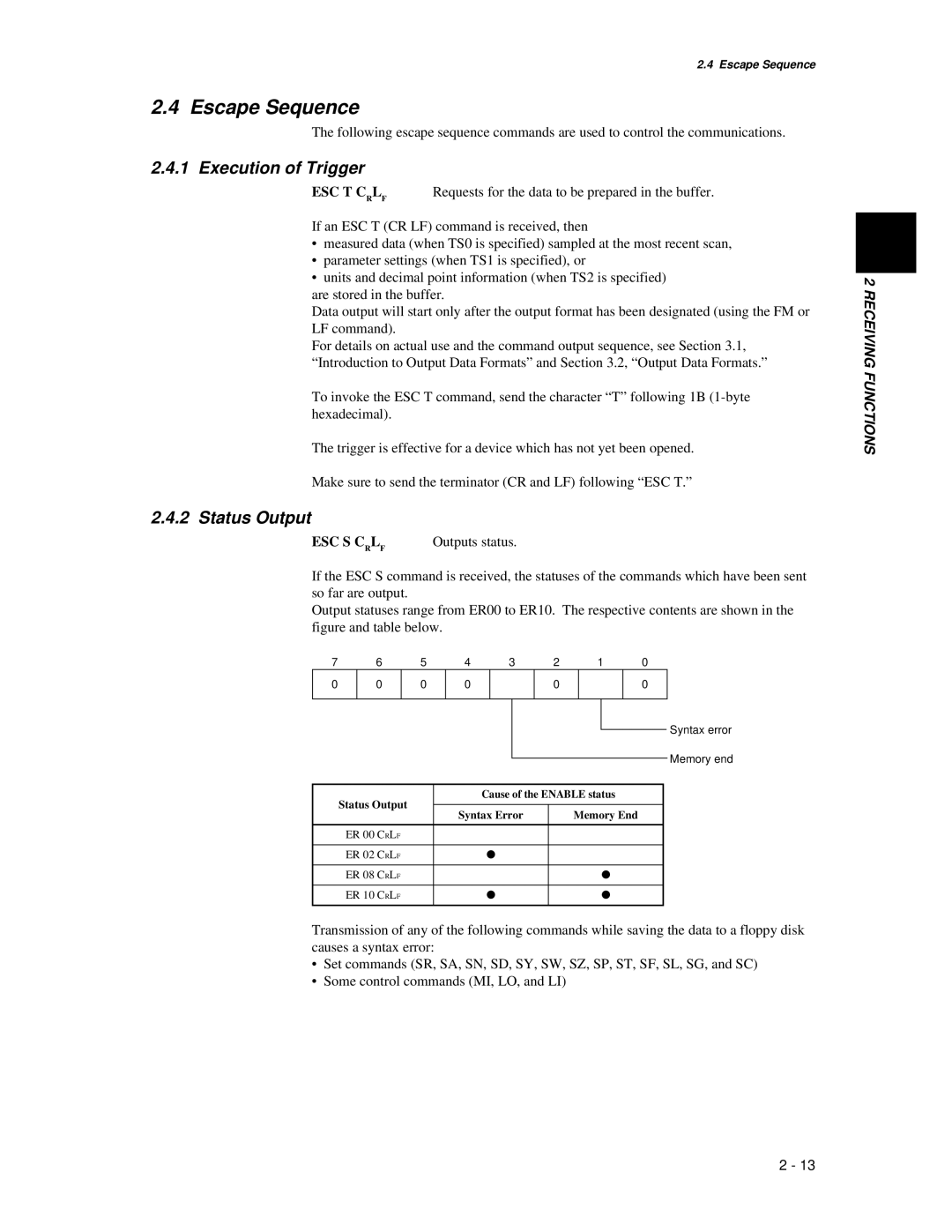
2.4 Escape Sequence
2.4 Escape Sequence
The following escape sequence commands are used to control the communications.
2.4.1 Execution of Trigger
ESC T CRLF | Requests for the data to be prepared in the buffer. |
If an ESC T (CR LF) command is received, then
•measured data (when TS0 is specified) sampled at the most recent scan,
•parameter settings (when TS1 is specified), or
•units and decimal point information (when TS2 is specified)
are stored in the buffer.
Data output will start only after the output format has been designated (using the FM or LF command).
For details on actual use and the command output sequence, see Section 3.1, “Introduction to Output Data Formats” and Section 3.2, “Output Data Formats.”
To invoke the ESC T command, send the character “T” following 1B
The trigger is effective for a device which has not yet been opened.
Make sure to send the terminator (CR and LF) following “ESC T.”
2.4.2 Status Output
ESC S CRLF | Outputs status. |
If the ESC S command is received, the statuses of the commands which have been sent so far are output.
Output statuses range from ER00 to ER10. The respective contents are shown in the figure and table below.
7 | 6 | 5 | 4 | 3 | 2 | 1 | 0 |
0 | 0 | 0 | 0 |
| 0 |
| 0 |
|
|
|
|
|
|
|
|
Syntax error
Memory end
Status Output | Cause of the ENABLE status | ||
|
| ||
Syntax Error | Memory End | ||
| |||
|
|
| |
ER 00 CRLF |
|
| |
|
|
| |
ER 02 CRLF | ● |
| |
|
|
| |
ER 08 CRLF |
| ● | |
|
|
| |
ER 10 CRLF | ● | ● | |
|
|
| |
Transmission of any of the following commands while saving the data to a floppy disk causes a syntax error:
•Set commands (SR, SA, SN, SD, SY, SW, SZ, SP, ST, SF, SL, SG, and SC)
•Some control commands (MI, LO, and LI)
2 RECEIVING FUNCTIONS
2 - 13
